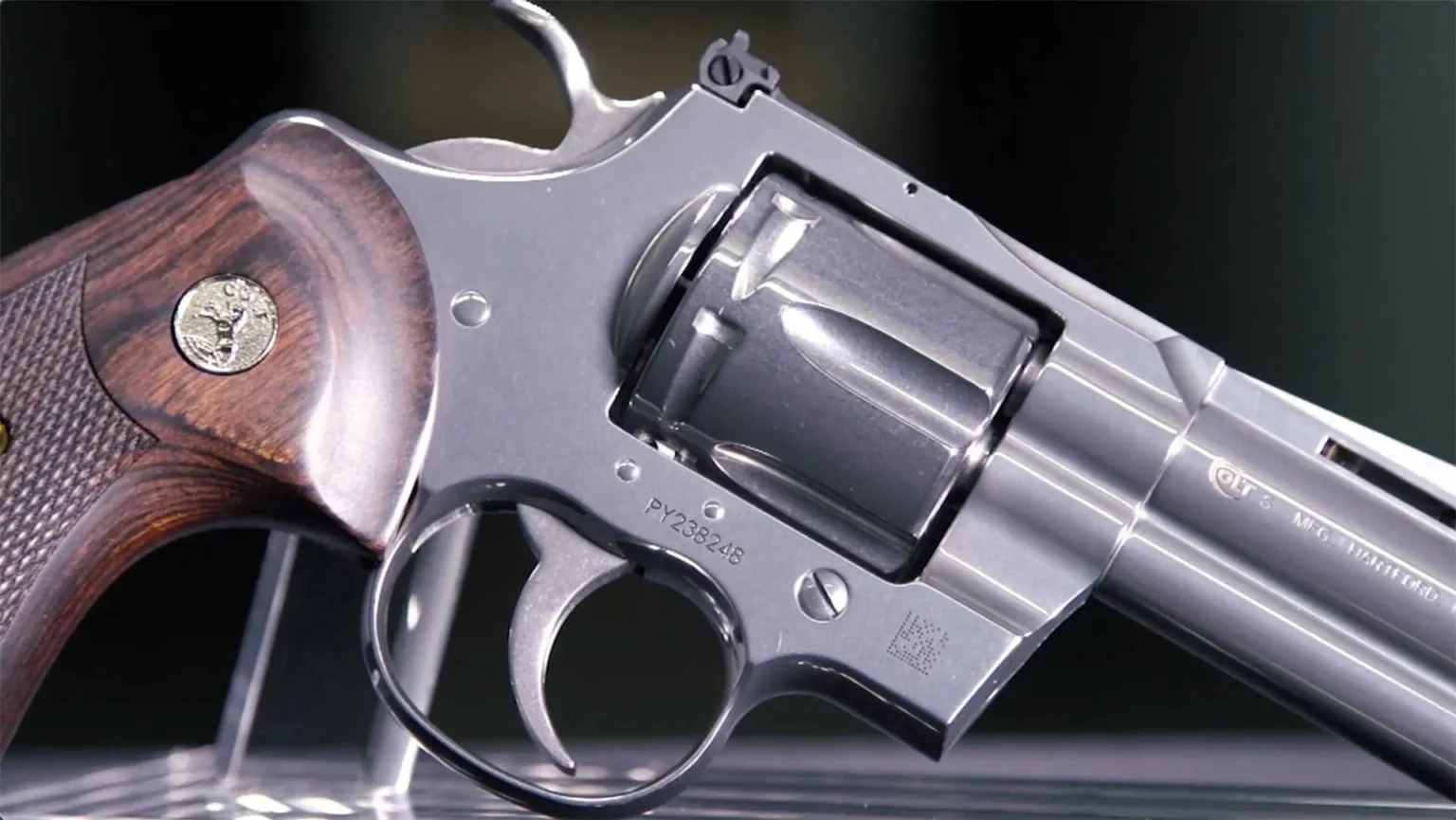Colt Python is a name that is synonymous with quality, precision, and elegance. This iconic revolver has a rich history and a legacy that continues today. In this article, we will explore the origins of the Colt Python, its rise to fame, and its impact on the world of firearms.
The Birth of the Colt Python
The Colt Python was first introduced in 1955 by the Colt Manufacturing Company. It was designed by Colt’s legendary engineer, William Elliot, who was also responsible for the design of the Colt Detective Special and the Colt Cobra.
The Python was initially intended to be a premium revolver focused on accuracy and aesthetics. It was named after the snake, known for its precision and speed, which was a fitting name for this high-quality firearm.
The Rise to Fame
The Colt Python quickly gained popularity among shooters and collectors alike. Its sleek design, smooth trigger pull, and exceptional accuracy made it a favorite among law enforcement officers, competitive shooters, and gun enthusiasts.
In the 1960s, the Colt Python was the go-to revolver for many law enforcement agencies, including the FBI and the Texas Rangers. Its reputation for reliability and precision made it a trusted sidearm for those who put their lives on the line.
Python also gained recognition in the world of competitive shooting. In 1957, legendary shooter Bob Munden set a world record by hitting a 4-inch target at 600 yards with a Colt Python. This feat solidified the Python’s reputation as one of the most accurate revolvers ever.
The Legacy of the Colt Python
The Colt Python’s legacy extends beyond its impressive performance. Its elegant design and craftsmanship have made it a highly sought-after collector’s item. Python’s popularity among collectors has led to a rise in value, with some models selling for thousands of dollars.
The Python’s legacy also lives on in popular culture. It has been featured in numerous movies, TV shows, and video games, cementing its place in pop culture history. Its iconic appearance and reputation for accuracy have made it a symbol of power and precision.
The Features of the Colt Python
The Colt Python was designed with precision and aesthetics in mind. It features a full-lug barrel, which provides better balance and reduces recoil. The barrel is also vented, which helps to dissipate heat and reduce muzzle flip.
The Python’s trigger pull is one of its most notable features. It is smooth and crisp, unmatched by other revolvers. This is due to the hand-fitting and hand-polishing of each individual part, a time-consuming process that results in a superior trigger pull.
The Python also has a unique cylinder lock-up system, which ensures that the cylinder is perfectly aligned with the barrel for each shot. This contributes to the revolver’s exceptional accuracy and reliability.
The Colt Python 4.25 Holster
The Colt Python 4.25 holster is a popular choice among Python owners. This holster is specifically designed to fit the Python’s 4.25-inch barrel, providing a secure and comfortable fit for the revolver.
The Colt Python 4.25 holster is made from high-quality leather and features a thumb break for added security. It also has a low-profile design, making it easy to conceal while providing quick access to the revolver.
The End of an Era
In 1999, Colt announced that it would discontinue the production of the Python. This decision was met with disappointment from revolver fans, who saw it as the end of an era.
However, in 2020, Colt announced they would bring back the Python. The new Python features the same design and craftsmanship as the original, with some modern updates. It has a stainless steel frame and barrel, a redesigned rear sight, and a recessed target crown.
The Impact of the Colt Python
The Colt Python’s impact on the world of firearms cannot be overstated. Its exceptional accuracy and elegant design set a new standard for revolvers. It paved the way for other high-quality revolvers like the Smith & Wesson Model 686 and the Ruger GP100.
The Colt Python’s legacy also extends to the world of competitive shooting. Its accuracy and reliability have inspired generations of shooters to push the limits and strive for perfection.
Conclusion
The Colt Python is more than just a revolver; it symbolizes precision, craftsmanship, and legacy. Its impact on the world of firearms and popular culture is undeniable, and its reputation for accuracy and elegance continues today.
Whether you are a collector, a shooter, or simply a fan of firearms, the Colt Python is a must-have for any collection. Its timeless design and exceptional performance make it a true icon in the world of firearms.



